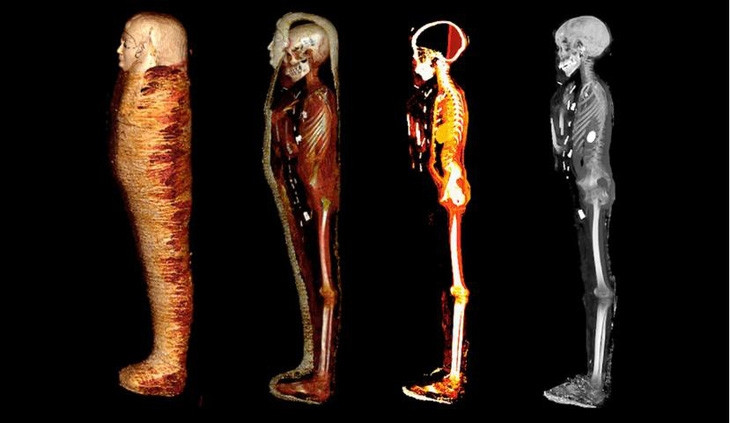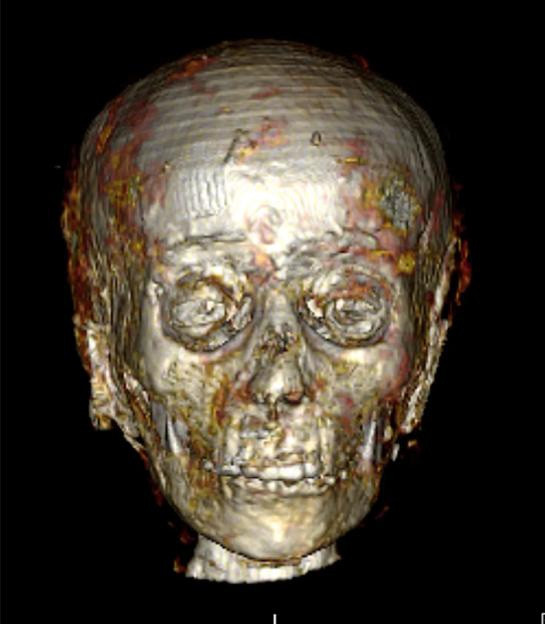The mummy of the “golden boy” had 49 gold and precious stone amulets carefully placed inside and around his body. He had a golden heart scarab in his chest and a golden tongue in his mouth.

Archaeologists use CT scans to study the mummy of the "golden boy"
The 'Golden Boy' was first found in 1916 in a cemetery used between 332 and 30 BC, in Nag el-Hassay, southern Egypt.
Decoding the mummy of the 'golden boy'
His body was found with a gilded mask and a breastplate, in two coffins: an outer one engraved in Greek and an inner wooden sarcophagus.
The boy's mummy has never been opened for examination. The coffin is in the basement of the Egyptian Museum in Cairo.
In a recent new study, archaeologists used CT scans to study the mummy of the golden boy.

Mummy's face seen through CT scan software
They discovered that it was the mummy of a teenage boy of high socioeconomic status who lived about 2,300 years ago in ancient Egypt.
The study found that the boy was about 128cm tall. Based on the level of bone fusion and the fact that his wisdom teeth had not yet erupted, researchers believe that he was no older than 15 years old.
Typical of ancient Egyptian mummification techniques, the boy's brain was removed through his nose and his skull was filled with resin. All of his vital organs were removed through an incision, except for his heart, which remained in his chest.
New discoveries
At least 49 different amulets made of gold and precious stones were discovered in the burial site and around the body, each representing different elements of Egyptian religion.
A golden tongue was placed inside his mouth to ensure the boy could speak to the gods in the afterlife.
“Many of the amulets were made of gold, while some were made of precious stones, baked clay or porcelain. Their purpose was to protect the body and bring life to the body in the afterlife,” Dr. Sahar Saleem, first author of the study and professor at Cairo University’s faculty of medicine, said in a statement.
“The golden heart scarab is very important in the afterlife. It will cover the heart on the Day of Judgment, so that it cannot testify against the deceased. It is placed in the body cavity during the embalming process to replace the disintegrated heart,” Dr Saleem added.
The boy was also buried with a pair of ordinary slippers. “The slippers were probably used to help the boy step out of the coffin. According to ancient Egyptian rituals, the deceased had to wear white slippers to show piety and cleanliness before reciting prayers,” Mr. Saleem said.
The new study was published in the journal Frontiers in Medicine.
According to Tuoi Tre